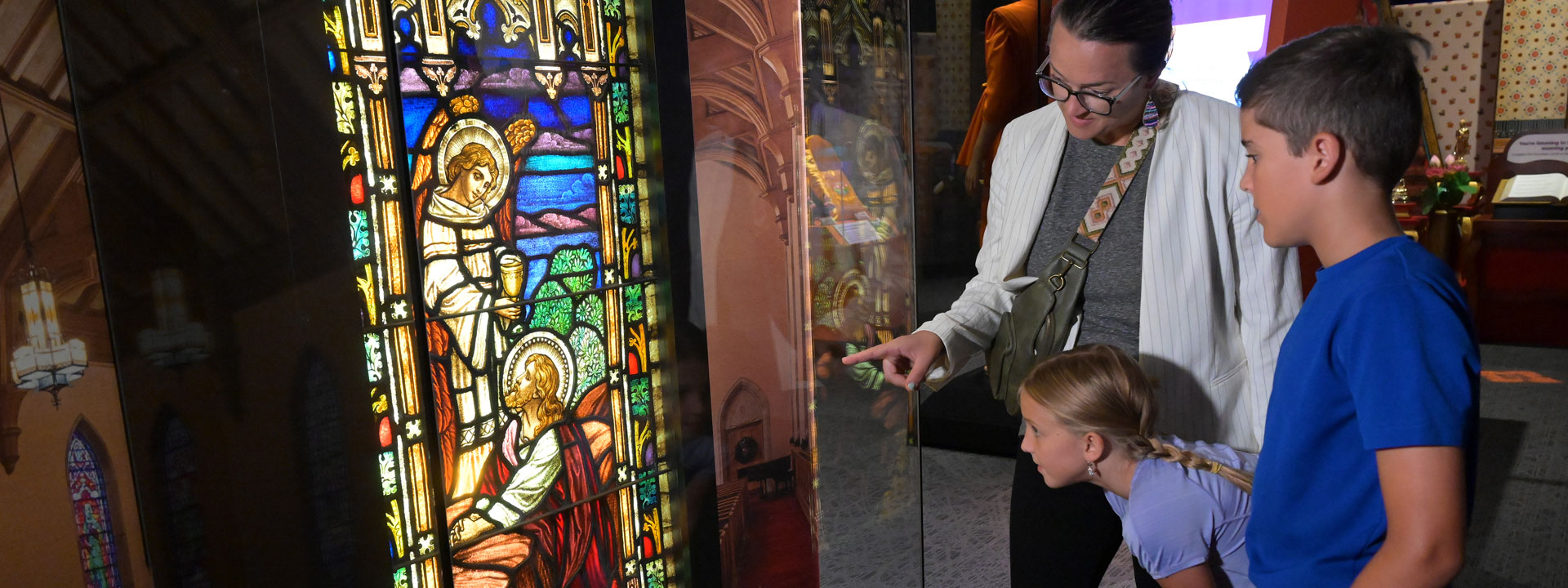As your family spends time exploring the Sacred Places exhibit, you may be introduced to places around the world that are unfamiliar. You may also learn about different cultures, traditions, and customs that are important to the people and communities who call these sacred places their home. With so much information, you may be unsure how to lead developmentally-appropriate conversations or interactions with your young child on such rich and diverse topics. We’re here to help!
As we continue our series of Sacred Places parent resources, Elyse Handel, Early Childhood Education Manager at The Children’s Museum, is back to share insights and ideas to help prepare you to visit the Sacred Places exhibit with your children.
Let your child take the lead
We encourage adults or caregivers with young children to let their child lead the exhibit visit. Let your child’s curiosities and interests guide the visit.
Walk into the space and let your child first notice all of the beautiful pictures, objects, and displays. Ask your child where they want to visit. What do they want to see and go explore? Some children will gravitate towards an object or a display that has a connection to their prior experience or knowledge.
For example, a young child may gravitate towards the puja offerings found near the entrance of the exhibit. Children will see pretend flowers, shells, and bananas.

Watch closely and listen carefully. Observe what your child is doing when they explore, touch, and interact with these items. Let their playful interactions, observations, and questions guide their experience and visit.
Start a conversation
After taking some time to watch and listen, you can start a conversation. Ask your child where they have seen these items before. What did they do with them? Help your child understand how they encounter these items in their own lives first—before introducing new concepts or ideas.
Remember to be sure to validate your child’s comments and contributions to conversations. Let them know that what they are doing, how they are playing, or the questions they are asking are all valid and important.
Next, you can introduce how these items or objects are used in different ways in other parts of the world. Around the exhibit there are labels and with information that share why and how these objects are sacred or how they are used. Read those labels and discern what information you can share to your child based upon their interest and curiosities.
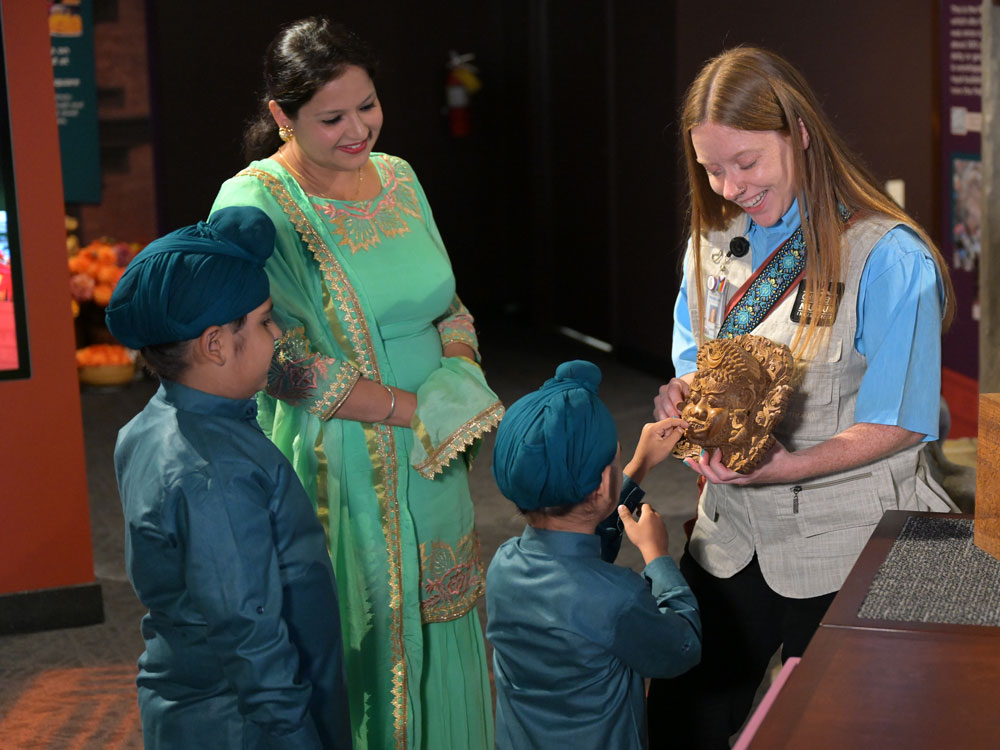
By having this short conversation and pointing out customs and traditions in other communities, your child will begin to understand how these items are important to other people around the world. This conversation, even though it may be short, is still so important! These interactions will help build a connection and help to introduce new concepts and ideas with respect, appreciation, and understanding for other people and communities around the world.
This is just one short example of how a conversation and interaction can take shape and form with a young learner inside the exhibit.
Helpful reminders
Here are some other important reminders when visiting with your young child:
Honor and validate your children’s questions, interest, and contributions
Whether they are playing with an interactive, asking a question, and making an observation, let them know you are excited to learn and play alongside them. This validation and recognition will help the child feel seen and safe and could help sustain their engagement, experience, and interactions in the exhibit.
Remember that you don’t have to have all the answers!
Sometimes as adults or caregivers we think we need to have the answers for everything. But it is okay to let your child know you are learning something new too. This can create a beautiful bonding experience when you are learning alongside your child. Make discoveries together and let your child know this is a new experience for you as well.
Make connections to the site guides
The immersive experiences in the exhibit feature a site guide who shares personal stories about their experience at their sacred site. Depending on their personal experiences and prior knowledge, conversations surrounding diversity can sometimes be pretty abstract for young children. It will be helpful for them to put a “face” to these sacred places and the stories, customs, and traditions that are being shared.
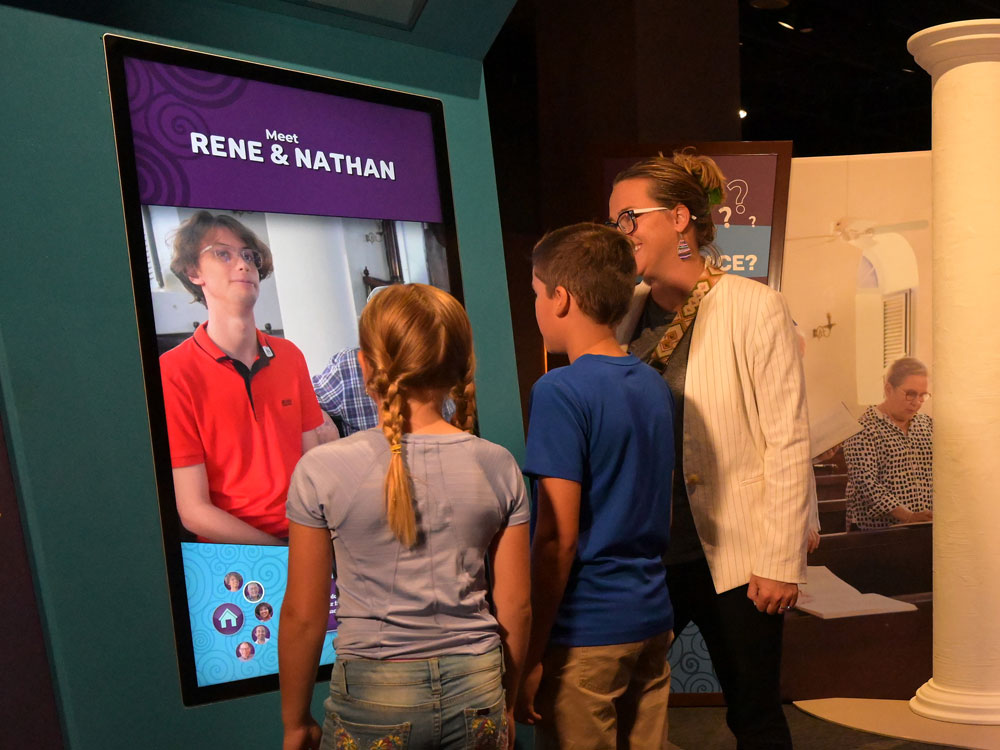
If and when you do share information with your child about the sacred place, refer back to the site guide. Say their names and show their pictures in the exhibit.
Limit your expectations
Don’t have lofty expectations of what you want your child to learn or understand—especially during the first visit. The beauty of this experience is that your child will naturally gravitate to what they are interested in learning about by where they chose to play or go inside the exhibit. Follow their lead and do not try to force information without having a context for their curiosities or wonderings.
Listen to their words, watch their play, and then choose what new information you want to share or learn together.
It’s OK if it’s a short visit
Remember that young children process information differently than older children and us adults. The exhibit will be at the museum through April 7, 2024. We encourage you to visit more than once so you can scaffold and build upon their understanding of other communities, cultures, and traditions around the world over time.
Your first visit might just be an opportunity to be immersed in the space, become familiar with the environment, and to see what’s featured there. During future visits, you could spend time in each immersive sacred place learning, playing, and exploring about individual communities and customs around the world.
Still not sure where to start?
Here are some interactives inside the exhibit we recommend you visit with your young child:
Sacred Places Globe
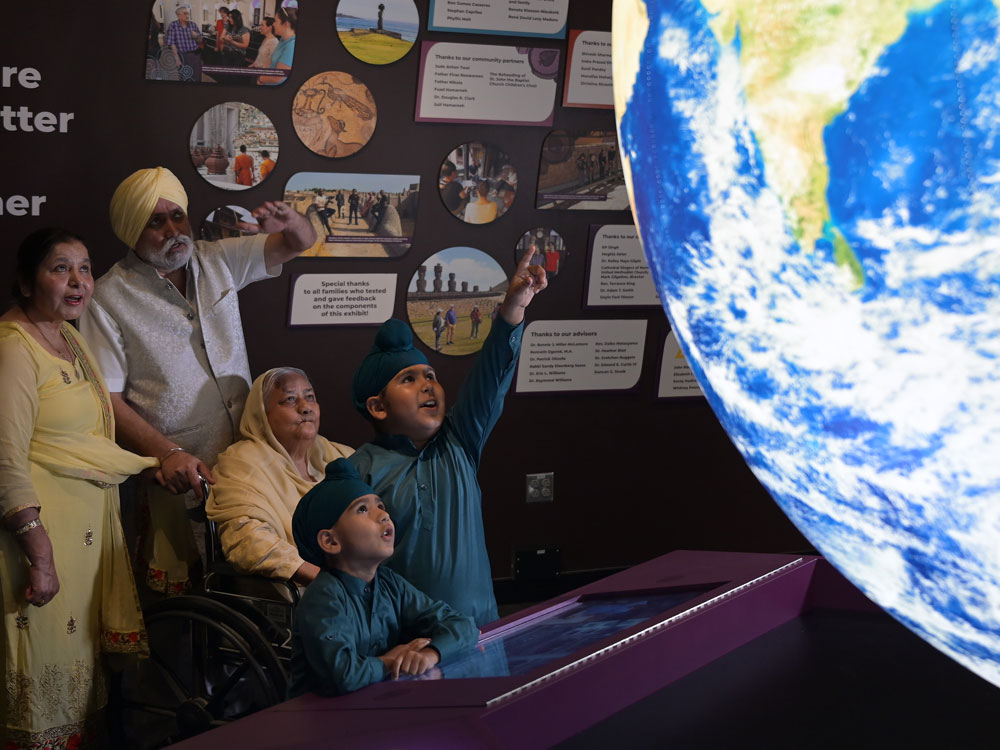
As you enter the exhibit, your child will be captivated by the large illuminated spinning globe. This globe highlights the sacred places and their locations across the world. Can your child count and find the sacred places on the globe? Additionally, there will be videos playing near the globe that introduce the sacred places. Take time to stop, watch, and listen.
Plaster the Great Mosque of Djenné

Meet Aïssata and learn about the Great Mosque of Djenné, the largest brick and mud structure on earth. Race against each other as you use the interactive computer to replaster the mosque, an annual tradition in their community.
Create your mosaic symbol of your own
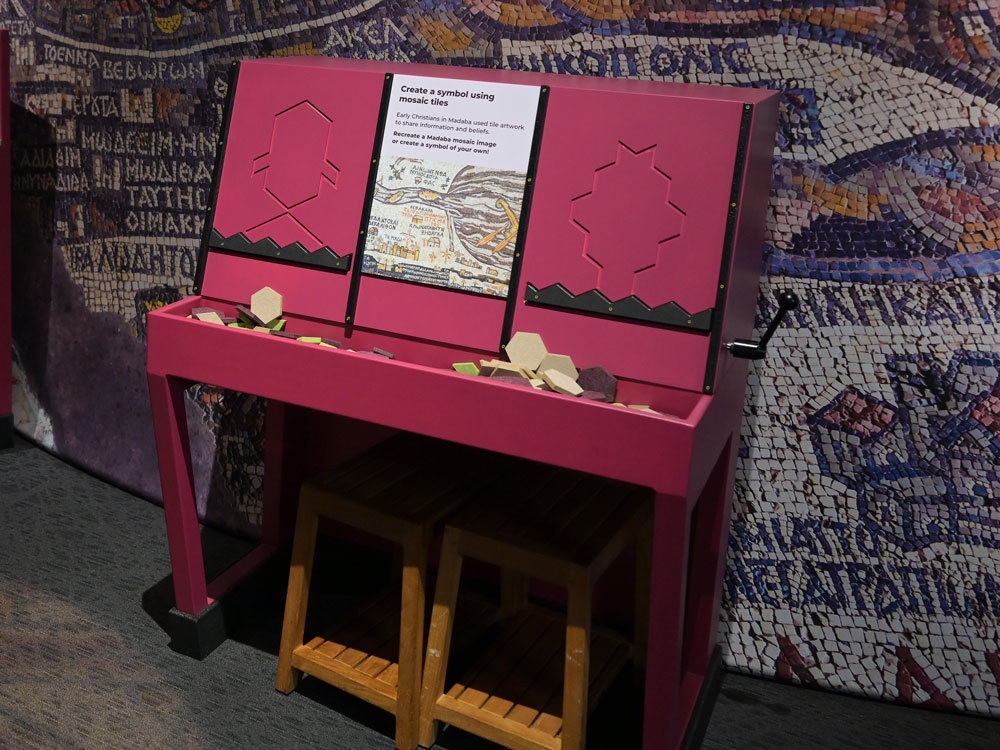
Meet Jude, a member of the Beheading of St. John the Baptist Church faith community in Madaba, Jordan. Learn why this church is a sacred place to her and her family and create your own mosaic symbol inspired by the church’s intricate mosaic map.
Well-equipped parents
As always, you know your family and child best. You, as a parent, are well-equipped to explore exhibits like Sacred Places with your child. So please engage your child in experiences and conversations that are best suited and developmentally appropriate for them. Outside the exhibit, you’ll also find a sensory map that shares more information about the exhibit that could be helpful to know prior to visiting.
Sacred Places is open through April 7, 2024.
Sacred Places was made possible by Lilly Endowment, Inc.
Lilly Endowment Inc. is a private philanthropic foundation created in 1937 by J.K. Lilly Sr. and his sons Eli and J.K. Jr. through gifts of stock in their pharmaceutical business, Eli Lilly and Company. While those gifts remain the financial bedrock of the Endowment, it is a separate entity from the company, with a distinct governing board, staff and location. In keeping with the founders’ wishes, the Endowment supports the causes of community development, education and religion and maintains a special commitment to its hometown, Indianapolis, and home state, Indiana. The principal aim of the Endowment’s religion grantmaking is to deepen and enrich the lives of Christians in the United States, primarily by seeking out and supporting efforts that enhance the vitality of congregations and strengthen the pastoral and lay leadership of Christian communities. The Endowment also seeks to improve public understanding of diverse religious traditions by supporting fair and accurate portrayals of the role religion plays in the United States and across the globe.

 (
(




